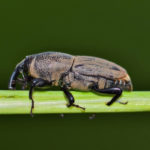
Billbugs Pest Control & Extermination Services
Our team’s mission is to provide every home and business customer with residential and commercial pest control that is safe, efficient, fully effective, and affordable. For all our pest control treatments our professional-grade extermination materials are green, all-natural pest control products, that are highly effective and completely safe for children and pets. We guarantee pest control treatments for billbug elimination as well as all our other extermination services.
Billbug Pest Control Utah
Legacy Pest Control is a family-owned business, serving customers throughout the greater Ogden Utah, and the surrounding areas for over 20 years. Our Utah pest control specialists help our customers with emergency pest control needs, guidance, and service scheduling 24 hours, 7 days per week.
We offer one-time treatment anytime as needed, or multi-treatment solutions, if necessary, and longer-term residential and commercial pest control services plans. We want to make our services more affordable for everyone. See our current coupon offers. We offer military discounts.
Call Legacy Pest Control, or use our online contact form to request a free bid or to schedule an appointment for pest control service.
Billbug Identification and Pest Control Facts
Billbugs are brownish to grayish lawn and garden beetles. They are members of the weevil family of insects. The billbug has a trunk-like snout and a ravenous appetite. This lawn pest has a bad reputation for causing brown eyesores across yards by laying their larvae in grass, ultimately destroying grass stems and seriously damaging or killing the roots too.
- Signs of infestation: The billbug is a common lawn insect throughout most North American regions. The presence of billbug larvae is one sign of potential infestation. During warm weather periods, adults can be seen crossing sidewalks, patios, decks, and driveways, and crawling on building exteriors as they make their way to the nearest untreated lawn to infest it. The larvae resemble grubs in appearance. They’re white and have no legs. Another sign of an infestation is dead spots on the lawn that do not turn greener even after watering. Or, live grass may have tiny heaps of white cuttings resembling sawdust around the stem bases. If dead grass is very easy to pull from the ground, this may indicate root damage from billbug larvae.
- Entry: If billbugs do happen to enter into a home or business building, it is likely because they’ve been collecting on the exterior sides of the building. These insects only rarely come inside, unless they accidentally wander in while they’re milling around doors and windows. They need to stay as near as possible to gardens and lawns in order to survive.
- Problem type: Billbugs can pose serious threats to corn and grass species that are central to agricultural operations. However, these insects are not harmful to people or pet animals. The limit of concerns that homeowners normally experience regarding billbugs is risk of damage to lawns and garden plants. But, a large billbug infestation can attract other insect species to a property as well as wasps, skunks, and other predators of billbugs.
- Preferred diet: Billbugs thrive on grass and garden plants. Billbug damage happens when the adults cut plant stems to lay their eggs and feed on fluids in those stems. Larvae also devour the stems and the roots below the surface of the ground. Favorite turf types of the billbug include Kentucky Bluegrass, Fescue Varieties, and Perennial Ryegrass.
- Reproduction: Generally speaking, billbugs produce one new generation per year, however, their reproductive abilities can vary between locations and species. Adults typically spend winters in leaf debris and in grass thatch, then lay their eggs in cavities they cut in the stems of grass. Finally, the larvae hatch within a few weeks and start voraciously feeding on the interior of the grass stem.
- Value: Like so many insects, billbugs and their larvae provide an abundance of food for many types of birds, frogs, and a vast number of other animal species. Humans eat billbug larvae in some tropical areas of the Americas. Billbugs also, like all other living creatures, in their death contribute to the volume and nutrient value of the earth’s soil.
- DIY Billbug Control Measures: You can use a combination of methods to help prevent the proliferation of billbugs throughout your lawn this year. Combined billbug control measures can include the cultivation of billbug-resistant turf types, the application of biological agents that are toxic to billbugs, and traditional insecticides. Preventing the development of excessive amounts of thatch in your grass is most essential to DIY billbug control efforts.
Legacy Pest Control offers a free estimate for help getting rid of Billbugs.
Frequently Asked Questions About Billbugs
- Seeding with grass species that are billbug-resistant.
- Applying biological materials such as billbug nematode parasites or certain fungal agents.
- Applying traditional insecticides at the most effective time of year against adults and larvae.
- Mowing in ways that help prevent thatch in your grass, which is ideal billbug habitat.
For Additional Information
For more details about eradicating billbugs, or for other pest control services, call Legacy Pest Control, Ogden Utah at 801-779-3131, or use our online contact form to arrange for a free bid.
